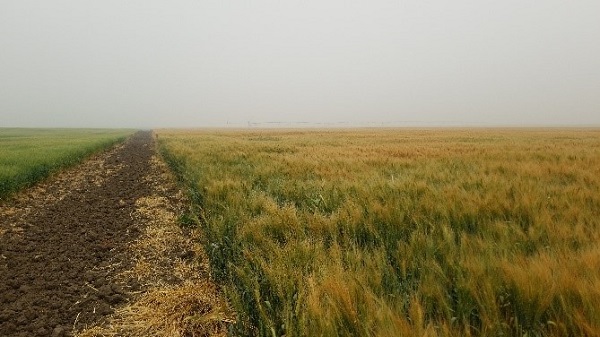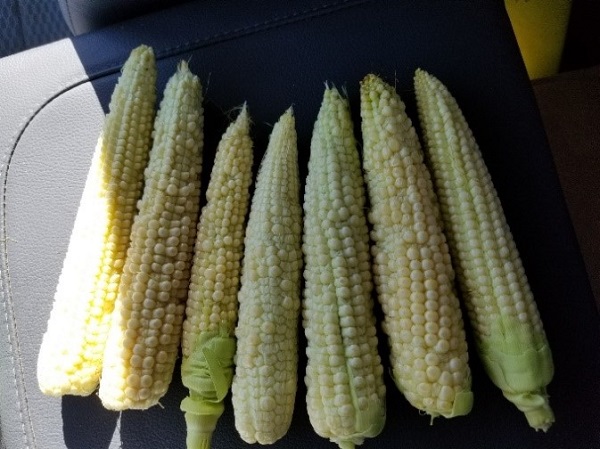Wildfire Smoke Affecting Corn Development
July 30, 2021 | Category: Agronomy |This summer has brought several challenges to farmers in western Canada—drought, hail, extreme heat, and wildfire smoke. This isn’t the first time that we have seen wildfire smoke hang in the air for extended periods of time; both 2015 and 2018 were record years for the hours of smoke recorded across Alberta. Unfortunately, 2021 might be heading in that same direction. At the time of writing this article, there are 258 wildfires burning in BC, and that smoke has made its way into Alberta, causing smoky/hazy conditions.

Smoky conditions in Alberta July 2021. Photo by Danielle MacCallum
Will this affect the development of the corn crops? That depends on how long the smoke sticks around. If you are only seeing hazy conditions for a week, that probably won’t be enough time to really delay maturity or reduce the yield of most crops. You might actually benefit from the reduction in heat that the smoke creates, as we don’t get as much direct sunlight because it can’t penetrate the smoke, so our days are slightly cooler. This may be good as we start to see corn plants tassel and begin the pollination process. When a corn plant is dropping pollen from the tassel to pollinate ear silks, very hot and dry weather can cause the silks to prematurely pinch shut, which will not allow for any pollination or, in some cases, will result in a reduction in the viability and release of pollen grains. Having cooler weather might delay flowering a little, giving the plant a bit more time to pollinate as many kernels as possible.
However, if we see these smoky conditions persist past pollination and into the grain-filling period, we may see some negative impacts on kernel number, yields, stalk quality, and maturity. Physically, smoke can lead to a high vapour-pressure deficit (drier air) that can trigger stomatal closure. As Jay Whetter notes in Country Guide, “Plants close stomata in response to smoke, and when they do that, they don’t mature, they delay flowering. Smoke slows down the whole biology of the plant.”
If smoke reduces solar radiation reaching the corn canopy during grain-filling, there can be reductions in kernel weight and grain yield. Research has shown that the corn plant yield losses are much more likely when solar radiation is reduced from early post-pollination (R1) toward mid-grain filling (R3).

Reduction in pollination due to extreme heat. Photo by Danielle MacCallum
Reduced solar radiation (from cloudy or smoky conditions) can also alter the important balance between carbon source and carbon sink in a corn plant. When pollination is successful, there is a large demand for carbon to flow toward the ear. This carbon is supplied by photosynthesis in the leaves and stalk. In situations where solar radiation is reduced, the leaves cannot keep up with the demands in the ear, and the plant begins to cannibalize itself. In some seasons, a particularly cloudy grain-filling period has resulted in lower grain yield but has also caused reduced stalk strength as carbon has been scavenged from the stalk to fill the grain.
With all that being said, there isn’t much that you can do to avoid the effects of these smoky conditions, but here are a few things you can monitor in your corn crop:
- Success of pollination: removing the husks carefully and gently tapping the ear can demonstrate pollination success in the VT/R1 stage. Silks will detach from kernels that have been successfully pollinated but will remain connected to unfertilized kernels.
- Keep an eye on stalk quality: in cases where the canopy is declining, it will be important to identify fields that have reduced stalk quality in order to prioritize harvest timing.
- Monitor moisture and maturity: smoky conditions may alter normal progression toward silage or grain maturity. The longer that we see the smoke stick around, the longer that it could take for the plants to dry down to the appropriate harvest moisture.
Danielle MacCallum CCA, P.Ag
Territory Manager – Alberta & BC
– and –
Greg Stewart
Agronomy Lead
